HISTORY 135F
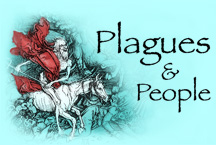
Infectious and
Epidemic Disease in History
Department of History
University of California, Irvine
Instructor: Dr. Barbara J. Becker
HISTORY 135F

Infectious and
Epidemic Disease in History
Department of History
University of California, Irvine
Instructor: Dr. Barbara J. Becker
The Rise of Humanism (15th c) |
The Black Death tested the authority and expertise of medical scholars and practitioners. Ancient texts were woefully inadequate as guides in dealing with this unexpected catastrophe. At the same time, scholars in all fields were growing more confident in their ability to create new knowledge. Many became increasingly aware of the liabilities and limitations inherent in relying on Latin translations of Arabic translations of Greek manuscripts. The goal of scholars shifted from strict preservation of existing versions of ancient knowledge to that of seeking out original Greek manuscripts and translating them afresh. To rescue ancient manuscripts, new translators must:
|
The Humanist movement in the 15th c led to (1) the re-examination of ancient texts:
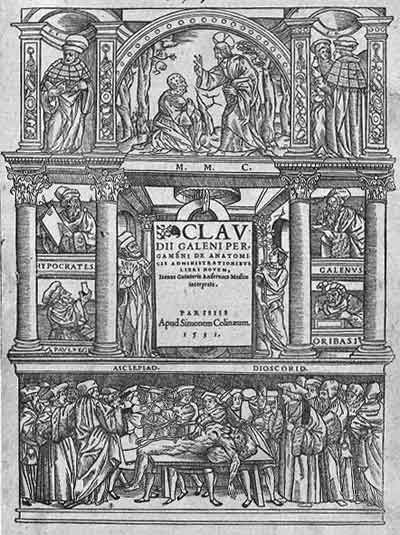
(2) the introduction of new means of practical instruction:
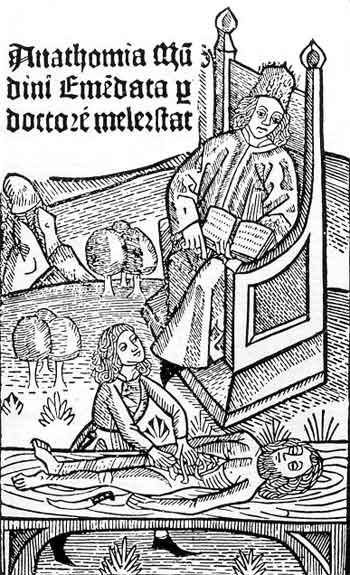
and (3) the emergence of new ideas:
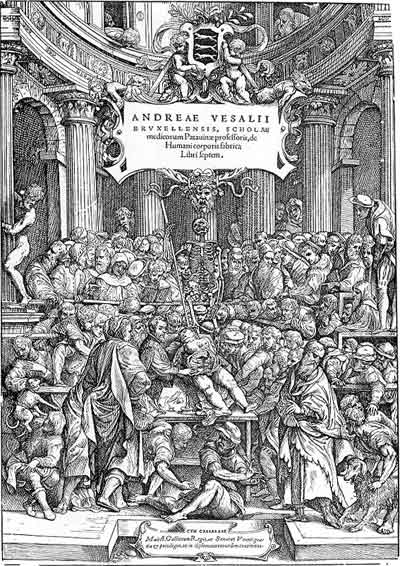
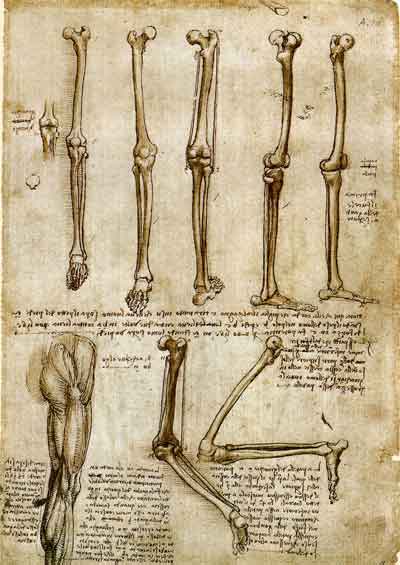
|
|
in Medical Theory and Practice |
|
a.k.a., Paracelsus 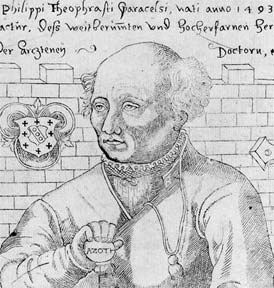 |
Mercury is imperfect as a metal: it is semi-generated and wanting in coagulation, which is the end of all metals. Up to the half-way point of their generation, all metals are Mercury. Gold, for example is Mercury; but it loses the Mercurial nature by coagulation, and although the properties of Mercury are present in it, they are dead, for their vitality is destroyed by coagulation.... Any one can at pleasure learn this art in Alchemy, since it is so simple and easy; and by it, in a short time, he could make any quantity of silver and gold. It is tedious to read long descriptions, and everybody wishes to be advised in straightforward words. |
|
Do this, then; proceed as follows, and you will have man. Wait awhile, I beg, while this process is described to you in a few words, and keep these words well digested, so that out of Saturn (lead), Mercury, and Jupiter (tin) you may make Sol (gold) and Luna (silver). There is not, nor ever will be, any art so easy to find out and practice, and so effective in itself. The method of making Sol and Luna by Alchemy is so prompt that there is no more need of books, or of elaborate instruction, than there would be if one wished to write about last year's snow. |
|
Paracelsus followed the doctrine of "two
lights":
|
|
Paracelsus believed chemistry to be equal to all other philosophical subjects from
antiquity
|
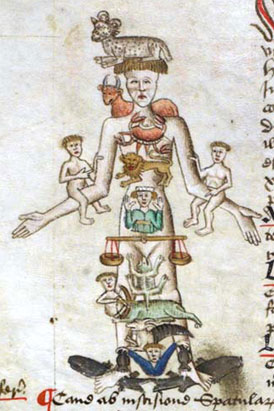
Zodiac Man |
Paracelsus was opposed to the notion of disease
as systemic humoral imbalance:
|
|
 |
| Go to: |
|
|